Trees, Branches and Twigs
This websites focuses on my Leatherland ancestors. But I am also active in tracing various other ancestral lines. Here is a summary of some of this research..
The Morgans of Shareshill
My grandmother Mary Elizabeth Morgan was born in 1899 in the village of Shareshill, Staffordshire, a few miles from Cannock. Her father Joseph Morgan was a coal miner. Her mother Eliza died of TB at the age of 42.
The Morgan family history can be traced back to Abel Morgan who was born around 1801 probably in Chelsyn Hay, Staffs. Abel married Mary Lyons in Cannock on Christmas Day in 1825. They had ten children one of whom was a son also called Abel born in 1833.
Abel junior married Fanny Poynor in 1853 who died a few years later. In 1861 23 year old Abel was living in Pinfold Lane, Cheslyn Hay. He was a brickyard labourer, living with James and Sarah Morgan (who were probably his brother and sister).
Abel married again in 1862 to Eliza Butler. Eliza already had a son, Thomas, whose father was not named on his birth certificate, but it seems likely that Abel was his father as they married five months later.
By 1871 Abel had moved to Shareshill. He was now a coal miner. Eliza died in 1907 at the age of 66 in Back Lane, Shareshill. Abel died of senile decay at the grand old age of 86 in 1919.
Abel and Eliza had five children. One son - Abel James born 1868 - married a lady called Alice. They had a son who was killed in France in 1917 while serving in the army. Another son, Joseph Henry Morgan, was my great grandfather.

An old apparently empty house in Shareshill
Joseph Henry Morgan was born in 1870 in Shareshill. He became a coal miner and married Eliza Adams in 1897. She was the 22 year old daughter of George Adams, another miner. Eliza already had a daughter, Elsie, born three years earlier when she was 19 years old. Elsie's birth certificate shows that Eliza was a domestic servant. Eliza Morgan sadly died of TB when she was 42 years old. In the 1901 census Joseph Henry Morgan and his wife Eliza were living in School Lane, Shareshill. He was a "coal miner below driver". They had eight children : Benjamin who died as a child, Mary Elizabeth - my grandmother (1899), Alice (1900), Joseph Henry (1904), Annie Elizabeth (1907), Walter John (1911), Frank Ernest (1913), Phyllis Mary (1915). Both Frank and Phyllis died of the same illness in childhood.
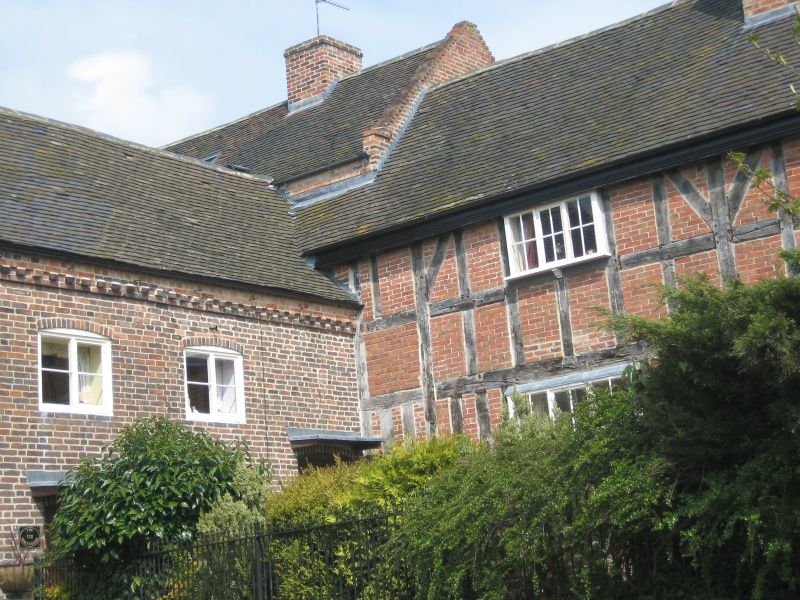
Monks Cottage, near Manor Farm, Shareshill
When I visited Shareshill, I tried to trace the roads in which the Morgans lived. I couldn’t find Back Lane where Abel lived, or Swan Terrace where my great grandfather lived in the 1900s. I did find Church Road, a long winding road which starts from the dual carriageway which leads to Cannock and goes through the village to the church. Unfortunately there was a big gap between number 1 and number 5-6, so number 3 where Abel Morgan lived in 1881 must have been knocked down. School Lane was still there. I read somewhere about a road in Shareshill called Tarts Row [no known connection to our family !]
The RICHARDS of Bulwell
My Richards ancestors - my father's family - came from Bulwell, near Nottingham. The family has been traced back to John Richards born in about 1801 in Winkworth, Derbyshire.
In the 1861 census John was a 60 year old bleacher living in Coventry Lane, Bulwell. The direct family line is via their son William born about 1829 who married Jane Straw on Christmas Day in 1853. He was a framework knitter. William and Jane had six children. At the birth of his son, James, in 1860 he was a silk glove maker.
My direct ancestor, James Richards, was born in Main Street, Bulwell and appears to have lived in Bulwell for most of his life. He married Mary Roome in 1889. In the 1891 census he was 31 and living at Coventry Road, Bulwell, working as a brickyard labourer. By 1901 he had moved to Hempshill Lane, Bulwell with his wife Mary and their children Gertrude, Annie, Lily and James.
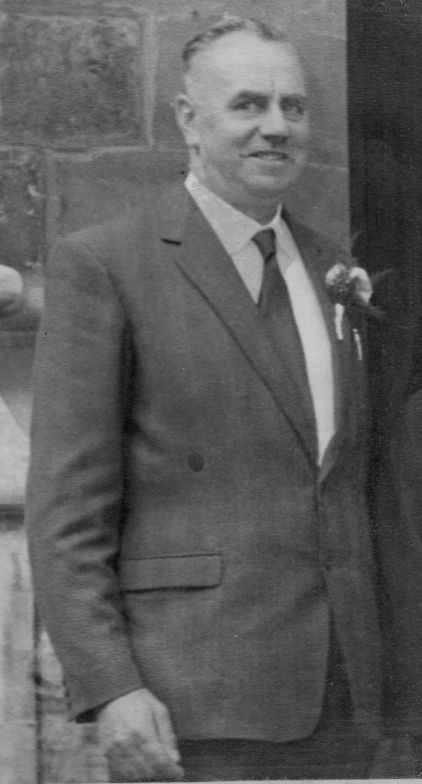
Albert Edward Richards, my paternal grandfather
My grandpa, Albert Edward Richards, was born in 1903. He worked for the railway all his life, firstly as a porter, later becoming a goods yard inspector. He married Edna May Hill at the age of 21. He was living in Railway Cottages, Holmwood Heath at the time. Around 1939 he moved from Bulwell to Staveley, Derbyshire and lived in railway cottages in Wharf Lane, Staveley. A railway line ran behind their house. He worked in the local railway marshalling yard. He died tragically at the age of 58 in an accident on the railway near Staveley Central railway station.

A house in Wharf Lane, Staveley
The FOSTERS of Churchover
My Foster connections come from Susanna Foster who married my great-great grandfather Samuel Leatherland in 1866 in Churchover.
The Fosters have been traced back to William Foster, son of Thomas and Elizabeth, who was baptised in Monks Kirby, Warwickshire in 1784. William married Etty Irons in Churchover in 1808 and their first son, John Foster, is my direct ancestor. [I am indebted to David Ashmore for information on the early Foster ancestors].
In 1830 John Foster married Kitty Carter in Dunchurch. They had five children but Kitty died in 1844. John Foster remarried a servant, Sarah Ward, in 1848. All the available records describe John as a labourer although there is a family legend that John was connected to canal boats or possibly a miller. John and Sarah had three children.
Susanna Foster, daughter of John and Sarah, was born in 1849. She is believed to have worked as a servant at Coton House, the local manor house. She married Samuel Leatherland in 1866 when she was still in her teens. They had a large family of twelve children and one child who died as an infant. All the evidence suggests that Susanna lived in Churchover for most of her life. She died there aged 77 and is buried in the churchyard.
The STECHMANNS of Shoreditch
My Auntie Esther who married my uncle, John Leatherland, has ancestors who originated from Germany and emigrated to London during the mid nineteenth century.
The earliest ancestor traced is Peter Stechmann and his son Jacob who emigrated from Germany to London sometime during the mid nineteenth century. Peter Stechmann was born in Hanover about 1814. Jacob was born around 1844, also in Hanover. It is believed that the family came from Altesland near Hamburg on the south side of the River Elbe, that they were a farming family, and that the distant family origins were Dutch.
The name is believed to come from Steg-Mann meaning 'the people living at the bridge'. The Altes Land area belonged to the former kingdom of Hannover, which at one time was part of Prussia. [This information comes from Dr Dirk-Heinrich Stechmann, via Carol Stechmann].
The Stechmanns first appear in the English census in 1871. Jacob was living in Milton Street, St Giles Without Cripplegate, in London. His surname was spelt Stickmann. He was a visitor in the household of Heinrich and Sophia Pohlmann. It is interesting to note that there were six other visitors in the house all born in Germany. Heinrich's occupation was a "tip and tazzle manufacturer" who employed 8 men {I have not yet found out what this was, although a tassler made tassells for furniture}. Jacob Stickmann was a tailor. Peter Stechmann has not yet been traced in this census.
In December 1871 Jacob Stechmann married Amalie Bethke in the City of London. Amalie is said to have been an au pair from Austria who worked for the household of a family who ran a tailoring business. However, the 1881 census says that she was from Stettin, Pomerania which is on the East German/Polish boarder and now part of Poland. Jacob and Amalie had five sons and one daughter.
By 1881 Jacob Stechmann and his father, Peter, lived at Clifton Street, Shoreditch. For some reason the family gave their surname as Hulchings in the 1881 census, except for the father Peter whose name is spelt as Steitchmann. A trade directory of 1882 lists him as Jacob Steachman, tailor. By 1891 the family was still living at Clifton Street, Shoreditch with their children and running their tailoring business. The name is spelt Steitchmann. Peter, the father, died in the German Hospital in Dalston in 1883. He was 68 and a farm labourer, probably at Hackney City Farm. Jacob died in Shoreditch in 1893 at the age of 48. Amalie carried on the family tailoring business. In 1901 the family were still living in Clifton Street, Shoreditch. The surname was now shown as Stechmann. She employed several workers.
The 1911 census shows Almelia Stechmann now aged 61 living at Dysart Street, Finsbury with her son Fred, a hairdresser's assistant. Three lodgers, one servant and a machinist lived in the household. The machinist was described as making trousers, she was from Holland.
One of Jacob and Amelia's sons was Henry Charly Stechmann born in 1881 in Shoreditch. In the 1901 census he was living with his mother. He was a hairdresser’s assistant. A 1902 trade directory lists Charles as a hairdresser at Club Union Buildings, Clerkenwell. He was known as Charles (or Coola). He married Sister Frederica Webster (known as Cissy) in 1901.
In the 1911 census, Charles Stechmann was living in Hoxton Street with his wife and five children, inlcuding a nine day old baby. There were two boarders in the household, both bakers from Germany. Cissy died of TB in 1915 in Walthamstow aged 35.
Other children of Jacob and Amelia include Hermann Charles who married Louisa Miles in Shoreditch. When Louisa died aged 26 and the children were put into a National Children’s Home. Herman was a champion swimmer and boxer and a hairdresser like several other relatives. His second marriage was to an Irish girl, Margaret Josephine Mangan.
Below : Henry Charly Stechmann and his wife Cissie with their children, Edwin, Herman, May and Dora

Henry Charly and Cissie Stechmann had several children. One of them - Dora Bertha born 1908 in Shoreditch – was my aunt's mother. She had two daughters Bertha (Bet) and Esther (my aunt). She later married James Thomas, a merchant seaman in 1933 and they had a daughter Marie. After his death during the Second World War, she remarried and had two more daughters. Henry Charly died in London in 1968 at the age of 86.
[I am indebted to Carol Stechmann, grandaughter of William Stechmann - Henry Charly's brother - who provided most of this information, and also to Julie Moores, a descendant of Cissie Webster.]
The ABBIS Family of Ampthill and Harlington
My great grandmother Elizabeth Abbis married John Edward Leatherland in 1897. She died at the age of 34. She was the eldest child of Walter Charles Abbis, village blacksmith in Harlington, Bedfordshire for many years. The Abbis family have a long association with the villages of Harlington and Ampthill. They were village blacksmiths since at least the beginning of the nineteenth century. This is their story.
The earliest confirmed ancestor is Joseph Abbis who married Rebecca Smith in Ampthill in 1795. I am not yet certain of Joseph's origins but there is a Joseph baptised in 1772 in Lidlington, son of William Abbis who married Ruth Cooke in Ridgmont, Beds in 1761. Lidlington is four miles west of Ampthill, Ridgmount is two miles south of Lidlington.
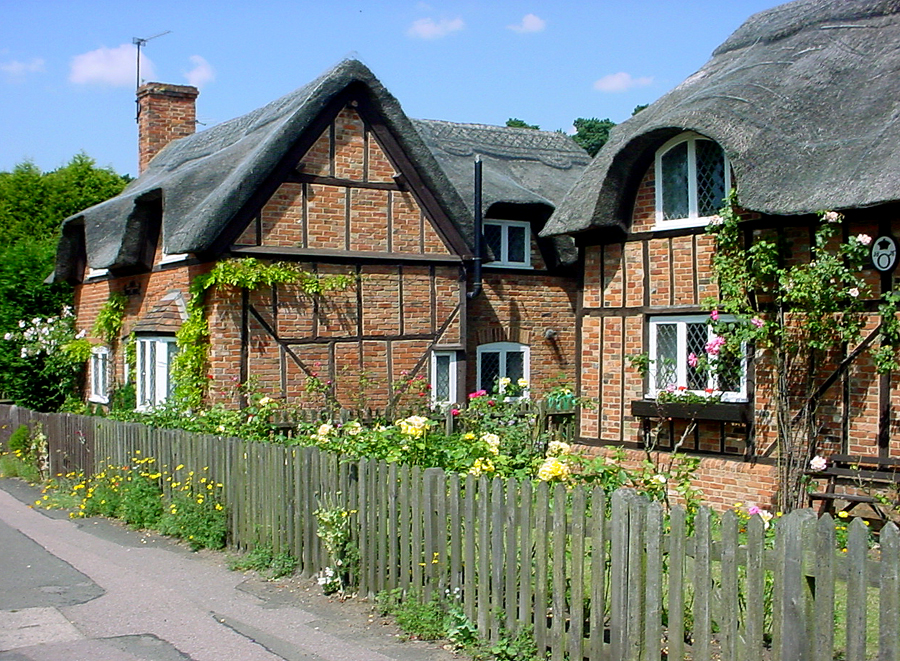
Cottages in Woburn Street, Ampthill (built around 1812-1816)
Joseph and Rebecca Abbis had three sons : Richard, William and Thomas. They were all baptised in Ampthill where the family seems to have been based throughout the first half of the nineteenth century. My direct line comes from Thomas. All three sons married and had children : Richard Abbis married Sarah Billington in Ampthill in 1814 William Abbis married Hannah Billington in Ampthill in 1822 Thomas Abbis married Sarah Jakes in Ampthill in 1824
Sarah and Hannah Billington were sisters, Sarah having been baptised in Ampthill in 1795, Hannah in 1801. Their parents were Edward and Elizabeth Billington.
Richard and Sarah Abbis
Richard and Sarah had twelve children all baptised in Ampthill between 1814 and 1838. Richard was seventeen years old when they married, Sarah had just turned nineteen. Richard was a blacksmith in Woburn Street, Ampthill. The 1851 census shows that he was a 53 year old master blacksmith employing one man and one apprentice. One of his children, George Abbis, born 1838 seems to have fallen on hard times. I found his details in the Bedford Prisoner records for 1855 as follows :
Name: George Abbis. Age: 17 Date of Offence: 12th April 1855. Offence: Wilful Damage. Sentence: 21 Days Hard Labour or pay a fine 1 pound 6 shillings and 4 pence. Type of trial: Summarily Convicted. Personal details Height: 5 ft 5 inches, Hair colour Dark Brown, Eye colour: Hazel Visage: Oval Complexion Sallow. Trade or occupation: Labourer Education: Read and Write Well. Marriage status: Single. Number of children: Unknown Birth town: Ampthill Residence town: Ampthill Residence county: Bedfordshire In 1859 George married Ann Stanbridge in Ampthill in 1859.
There is some evidence as to what happened to them in the Poor Law and Settlement records held in the National Archives. These records show that Ann suffered from epilepsy, and that by the early 1850s George and Ann were living in Rotherhithe, London. The clerk of the Poor Law Union in Rotherhithe said that “Geo. Abbis is at work far away. Cannot say how long he received 2s a week for his wife. She is a great trial. Have to keep a fire night and day. She is not safe alone and can see scarcely anything.”
Another of Richard and Sarah's sons, William (born 1831) also became a blacksmith in Ampthill. He later became a victualler and appears in the 1871 census as landlord of the Compasses Inn in Dunstable Street, Ampthill.
William and Hannah Abbis
William and Hannah Abbis also settled in Ampthill. The 1851 census shows that William was a 52 year old publican and master blacksmith employing two journeyman. In the 1861 and 1871 census he was simply described as blacksmith. William and Hannah had six children between 1823 and 1840 all baptised in Ampthill.
William died in 1873. He left a will in which he described himself as “blacksmith wheelwright and licensed victualler”. It appointed his sons Edward and Frederick Abbis as executors. Edward was a blacksmith and farmer in Toddington, six miles south of Ampthill. Frederick was a blacksmith and wheelwright in Ampthill. The will left “my two new cottages at Park Hill Ampthill now in the several occupations of William Tillyard [?} and my son Fredrick Abbis to my daughter Caroline Abbis for life”. He left two other cottages in Woburn Street, Ampthill (one of which was tenanted / occupied, one of which was unoccupied) and another cottage in Ampthill to his trustees with power to sell them abd to divide the proceeds equally between his son, William, his son Edward, and his daughter Emma. He left a legacy of nineteen pounds and nineteen shillings to a daughter Harriet. He left all his tools and everything relating to his blacksmith and wheelwright business to son Frederick. The effects in the estate were valued at under £300.
Thomas and Sarah Abbis
Thomas and Sarah Abbis are my direct ancestors. Thomas worked as a blacksmith in Dunstable Street, Ampthill. They had eight children between 1827 and 1842. Their eldest son, Thomas, worked as a blacksmith in Ampthill in his early years but later diversified. By 1861 he had moved to the neighbouring village of Westoning and was a “blacksmith and pig dealer”. By 1871 he was a grazier. Another son George Abbis (born 1829) became a wheelwright but moved to Northfleet, Kent. There is evidence that he travelled to the United States around 1857 as his daughter was born there. By 1861 he was back in Ampthill working as a “retail beer house keeper” at the White Horse, Dunstable Street, Ampthill. But by 1871 he had become a farmer at Janes Farm, Stansted, Kent. By 1881 he was a farmer of 81 acres employing his two sons at Clayland Farm House, Shipley, Sussex. By 1891 he was a farmer in Horsham, Sussex, with five farm servants living with his family. The 1901 census described him as a `feeble minded` 72 year old living with daughter and son-in-law at Brookwood Farm, West Grinstead.
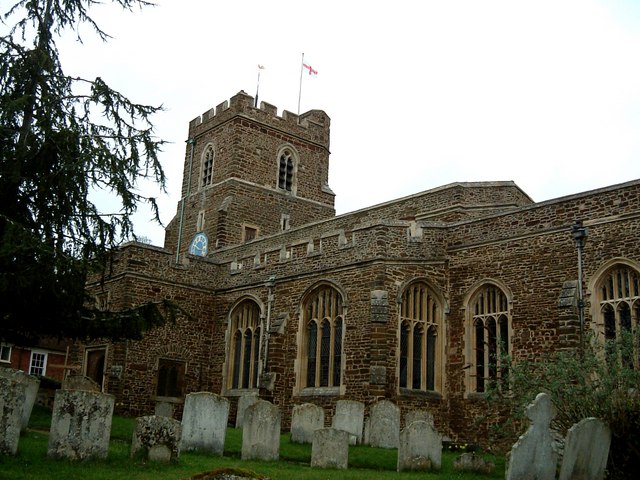
St Andrews Church, Ampthill (photo by Rob Farrow, under Creative Commons license)
Charles Abbis (1833-1913)
My direct ancestor was Thomas and Sarah's son, Charles Abbis, who was born in 1833. He worked as blacksmith, wheelwright and undertaker initially in Ampthill, but he moved to Harlington sometime during the 1850s. He married twice. His first wife, Mary Grimes Prestidge, was a lace maker from Northamptonshire. She later worked as a dress maker. They had six children. Mary died at the age of 40. Within less than a year, Charles married again to Frances Busby. In every censuses between 1861 and 1911 Charles' occupation was blacksmith in Sundon Road, Harlington. He was described as the village blacksmith in every trade directory from 1862 until his death in 1913. He left a Will which appointed his sons Walter Charles Abbis and Harry Prestage Abbis as executors. He left his estate divided equally between his six children. The gross value of the estate was £385, the net value was £92.
An interesting house in Sundon Road, Harlington
Walter Charles Abbis (1853-1938)
Walter Charles Abbis was the father of Elizabeth Abbis. He was born in Dunstable Street, Ampthill in 1853, son of Walter Charles and Mary. He married Harriet (Hariotta) Young at the age of 20. All the censuses from 1871 to 1911 show him as a blacksmith in Sundon Road, Harlington. No doubt he worked alongside his father. He also worked as a wheelwright and undertaker.
Walter and Harriet had ten children. The eldest, Elizabeth, moved to London and was a 16 year old domestic servant in the household of Luke Dancer, a dairy farmer in Fulham, West London, in 1891. In 1897 she married John Leatherland. She died in 1908 leaving four sons. The next child, Annie, was born in Islington in 1878. It is not clear why her mother was in London at this time. The 1901 census shows Annie was a 22 year old domestic parlour maid in Birmingham living in the household of Mary Johnson and her son John Butlin of Pakenham Road, Edgbaston. John Butlin was a solicitor. I understand that John E. Leatherland later worked for the Butlin family. The 1911 census shows that Annie was still a domestic parlour maid domestic in John Butlin's household. By then he was living in Somerset Road, Birmingham. Annie later probably married John Jones in Manchester (1928).
Another daughter, Kate Abbis (born 1880) married William Bentley in Ampthill in 1904. They settled in Harpenden and had three sons. The next child, Frederick Abbis (born 1883) moved to Cheshire and married Beatrice Raybould in 1906. The 1911 census says that he was a waterworks labourer in Altrincham, Cheshire. They had two children although one died in infancy. George Abbis was born in 1884. In 1901 he was a 17 year milker on a farm in Harlington. In 1911 he was a 27 railway platelayer in Cricklewood, North West London. He married in 1907 and had two sons , Edward and Walter Abbis. I understand that George lived into his 90s. His sons died in Camden and in Cambridge in the mid 1980s.
Rosa Abbis was born in 1885. I understand that she never married and lived in St Albans. Charles Abbis was born in 1889. In the 1911 census he was a 21 year old bricklayer`s apprentice living or staying with brother Frederick in Altrincham, Cheshire. He probably married Edith Wood in Cheshire in 1912. He died at the age of 38 in Cheshire in 1927 leaving five children.
Harry Abbis was born in 1890. He was an 18 year old station coal porter in 1911. My great uncle told me that he worked on Mr Richardson`s farm in Harlington and later as a machinist in Mr Gillam`s straw-hat factory in Luton. Harry enlisted in the Bedfordshire Yeomanry on 1 November 1914. After this was broken up, he served with the Lincoln & East Ridings Yeomanry in Ireland and Egypt. He served in France with the Machine Gun Corps. He was present at the taking of Valenciennes and Famiers. Harry was killed at his gun by enemy shelling on October 26 1918 two weeks before the Armistice. He is commemorated on the Harlington village war memorial.
The last child of Walter and Harriet Abbis, William (known as Billie) was born in 1894. He married Florence Pett and lived into his 80s. They had five children : Marjorie who became a missionary and married Service Farrant, Vida who married John Walker and remains living in Ampthill, Geoffrey who also became a missionary, Myra a nurse who married Gerald Martin, and Trevor Abbis who married Eunice Walker.
Abbis in Local Trade Directories
Pigot's Directory of 1839 listed the three Abbis brothers, Richard, Thomas and William as blacksmiths in Ampthill. The Post Office Directory for 1847 also listed Richard, Thomas and William Abbis, the first two being classed as 'shoeing smith'. The Post Office Directory for 1864 listed : George Abbis, blacksmith of Dunstable Road, Ampthill Mrs Sarah Abbis, blacksmith, Woburn Street Thomas Abbis, beer retailer, Dunstable Street William Abbis, Compasses, Dunstable Street William and George Abbis, coach builder, Woburn Street Melville's Directory of 1867 listed the following Abbis's in Ampthill :
Frederick Abbis,blacksmith, Woburn Street. George Abbis, beer retailer, Dunstable Street. John Abbis, farrier and general smith, Dunstable Street. Thomas Abbis, beer retailer, Dunstable Street. Mrs Sarah Abbis, general .smiths, Woburn Street. William Abbis, blacksmith. George Inn, Woburn Street
Blacksmiths
Blacksmiths are usually associated with making shoes for horses, but a nineteenth century blacksmith played a key role in the village as a metal worker making objects from iron or steel by forging the metal and using tools to hammer, bend, and cut it. Blacksmiths would make many items in the forge : wrought iron gates, grills, railings, light fixtures, furniture, tools, agricultural implements, decorative and religious items, cooking utensils, horseshoes and even weapons. But much of the blacksmith's work was based around horses. Horses were an essential part of the local economy until the invention of the motor car. Carriers carried goods between places using horse and cart, people would travel on horseback or in horse-drawn carts, farmers used horses to pull ploughs, carts and waggons, there were even horse-drawn buses in some towns. The blacksmith not only made and fitted shoes for horses, he also made parts for their harnesses, stirrups for their riders, and fittings for carts and waggons. (A blacksmith who specialized in making and fitting horseshoes came to be called a "farrier").
The skills of a village blacksmith tended to be passed down from generation to generation. Sons would start to learn at an early age helping their father, for example by pumping the bellows. The history of the Abbis family illustrates this. Others learned their skills by being apprenticed to a blacksmith. The standard length of an apprenticeship was seven years. The work of the blacksmith was closely linked to the work of the wheelwright, who was a craftsman who made wooden carts and waggons as well as wheels.
Origins of the Abbis Surname ?
Early examples of the surname recordings include the marriage of Jane Abbis and Robert Lawter, at Covehithe in Suffolk (1611), the christening of James, son of Robert and Jane Abbiss (1690) at St. Mary Woolnoth, London, and the marriage of William Abbes and Sarah Page, at Great Yarmouth, in 1724. A notable bearer of the name was William Abbys, mayor of Bedford in 1534. The first recorded spelling of the family name is said to be that of John Abbys in 1480, recorded in the medieval rolls of Norfolk.
Although it is tempting to think that the name derives from the word 'Abbess' as in themother superior of an abbey of nuns, nuns of course take a vow of celibacy so it seems unlikely that the surname originates in this way.
Abbis Surname Distribution
The Mormon International Genealogical Index (the IGI) has 1,939 baptism / marriage / burial entries for Abbis and variations in the UK. The breakdown of the main surname variations is as follows :
- ABBIS – 586.
- ABBISS – 684.
- ABBES - 127.
- ABBESS - 104.
- ABIS – 57.
- ABS – 33.
There are also 1,482 separate entries for the name ABBS.
Out of the 1,939 entries for Abbis (plus variations), the main clusters are as follows : 918 - Bedfordshire 379 - Hertfordshire 243 - Staffordshire 183 - London 127 - Cambridgeshire 115 - Worcestershire 100 - Suffolk 39 - Sussex 38 - Norfolk Bedfordshire therefore accounts for around half of all Abbis's. I plan to do further research into the Bedfordshire Abbis's. They had a presence in the county since at least the 16th century. There are quite a large number of baptisms and marriages between 1550 and 1600.
The Bedfordshire and Luton Archives and Records Service has an excellent on-line index which reveals the existence of the Andrew Underwood collection which includes some detailed Abbis family history.
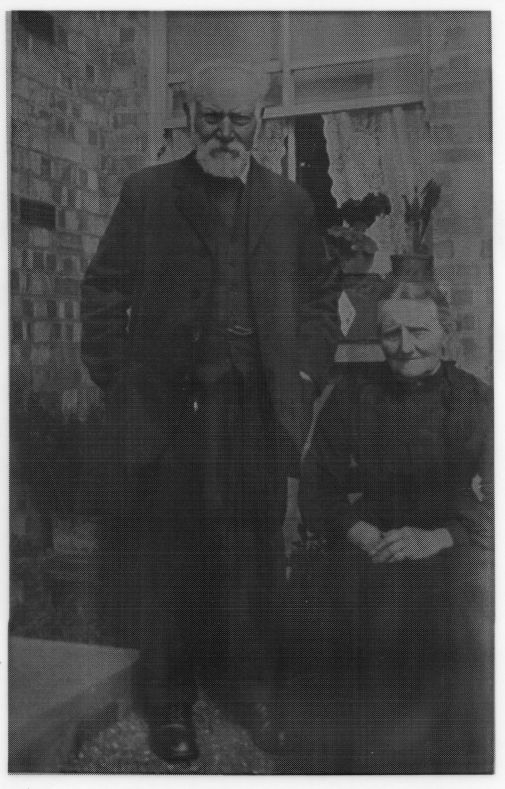
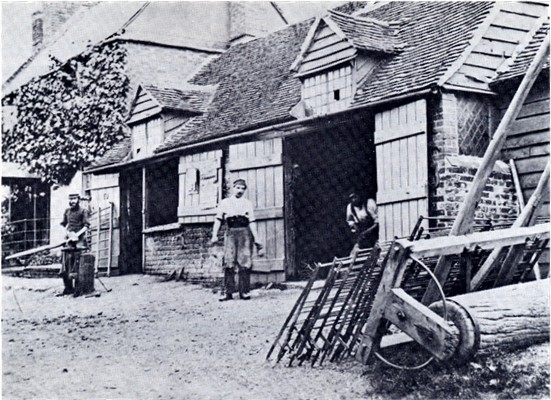
Nineteenth century blacksmith's shop
Cottages in Harlington
Abbis burial plot in Harlington Churchyard
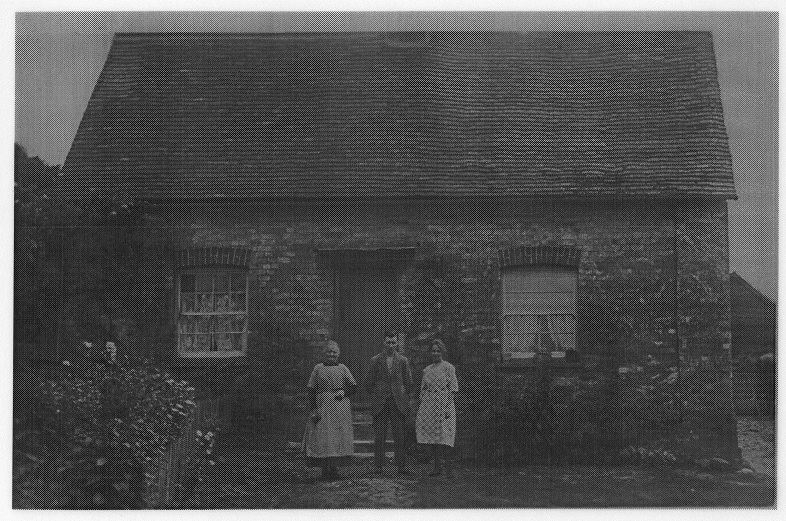
Harriet Abbis in Harlington with nephew William Leatherland and William's wife Flo
My great uncle John Henry Leatherland wrote his childhood memories of holidays in Harlington as a boy during the First World War. These recollections were published by the Harlington Heritage Trust and by kind permission of the Trust Chairman, I reproduce these below :
"One day (in I think 1915), 3 or 4 other boys and myself were walking along the bottom of the railway embankment towards Sundon, when one of the boys surprised a rabbit. He endeavoured to catch it by falling on it, was successful and dispatched it in the usual way. Then followed a discussion on how this boy was to get the rabbit home, it being explained to me that if caught with it, he could be charged with poaching. The solution was to pick some blackberries and thoroughly stain a large handkerchief and tie the rabbit in it. (Actually it was a large piece of rag - it was unusual for working class boys to have a proper handkerchief, except on Sundays). All went well, we met neither farmer nor policeman, nor anyone else in authority, which was probably just as well, undoubtedly they hadprevious experience of this piece of subterfuge."
"Mention of Sunday takes me on to one of the first personal questions I was asked by Harlington boys, namely was I a Church 'un or a Chapel 'un ? They were anxious that I should go to the right place for Sunday School, do the right things, say the right responses, etc. Being C. of E. I went to the same Sunday School as the boy who "poached" the rabbit."
"Rabbits takes me to harvest time 1917. Hravesting then was of course done by horse drawn cutter/binder, the sheaves being stacked in stooks of 8 or 10 sheaves and left for 2 or 3 weeks for the ears to dry out. This of course was men's work ; there was quite a bit of experience needed to make a stook that would not collapse even in a modicum of wind. We boys thought harvest time was great fun, especially when the last few yeards of corn was being cut and all the small animals, who had kept moving inwards away from the reaper, burst out trying to escape. Usually there might be a dozen or two but, in this field, on this occasion, the number caught filled three-quarters of a milk float. I do not know how the farmer disposed of them, but undoubtedly there were many village families who had their war rations supplemented."
"During my holiday fortnights there was always a picnic. Grandmother, a couple of aunts, various cousins and two or three neighbours would make for the Clappers laden with baskets, bags, pots and kettles. We did not take water as that could be obtained from a pure spring source in a lane off to the left of Sundon Road and at the foot of the climb up to the Clappers. I doubt if that spring is still there but, if it is, I would doubt that it is fit to drink." [The Sharpenhoe Clappers is a local hilly woodland area].
Another annual event was when Grandfather [Walter Charles Abbis] would take the family, and a neighbour friend or two of Grandmother's, for a ride in a wagonette to Woburn Abbey. Although the house and park were not open to the public, the old duke allowed (respectable) locals to walk or drive through the deer park."
"There was a Chalk Pit about half way up Sundon Hill. I was told that it had originally supplied lime to the Sundon Cement Works, but at the time of my holidays seemed only to be used by local farmers wanting lime for their fields. A two-wheel farm wagon full of lime was very heavy, and a horse could not hold it back on that steep bit of hill. So, in addition to metal shoes slipped under the wheels, a piece of tree trunk about 6 or 8 inches in diameter, was hooked over the axletree and the body of the wagon about half tipped so that much of the weight rested on this trunk, the end of which formed an effective brake as it dragged on the road surface."
"There may be places and occasions when the same method is used today, in fact it might still be used at Harlington if the chalk pit is still in use. The joy of the chlak pit for us boys was, however, that it was marvellous for sledging. Any old bit of plank, peice of corrugated iron, old box or tin tray was good enough for a sledge. When the chalk was prefectly dry or when the surface was slightly damp it was, to us, perfect. Mothers, and grandmothers, sad to relate, took an entirely opposite view !"
"My Aunt Annie {Abbis} told me on one occasion of a special train journey, which must have happened about the turn of the century. An uncle, who was working up north, was taken ill and the grandparents decided to despatch Annie to make sure he was being properly looked after. Annie consulted the Station Master about the quickest way to get to her destination ; she thought she might travel forward to Bedford by stopping the train and picking up the express there. She was told, however, that it did not stop until Leicester, but he would try to get the express stopped at Harlington. In this he was successful, the exact stopping place for the engine was indicated on the platform, as was the place Auntie Annie was to stand, with the Station Master behind her. The enginestopped with a screeching of brakes and blowing of steam. Aunt says she was literally pushed into the carriage, while lower down the platform, her trunk was thrown into the guards van and the train was moving again before you could say Jack Robinson."
"I cannot imagine Aunt Annie making up this story, she was a very "correct" and intelligent lady, and not at all the sort of person to indulge in make-believe."
Harlington War Memorial
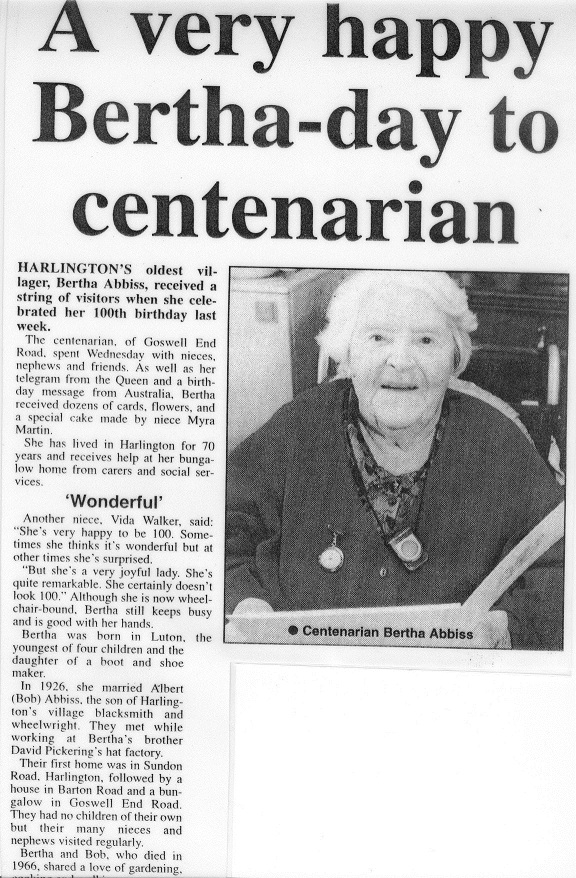
The Atkins Family - Portmanteau Makers of Battersea
After the death of my great grandmother, my great grandfather John Edward Leatherland advertised for a housekeeper to look after his four young boys. Rosina Atkins applied, got the job and later married him.
Rosina was born in Lambeth in 1871. She was the daughter of William John Atkins a portmanteau (suitcase) maker from Battersea. Rosina worked in the family business and can be found in the 1891 census employed as a dye stamper. By 1901 she had left home and was living in Barnstaple, Devon working as a bar attendant at the railway station. Later she became manageress of a railway station buffet.
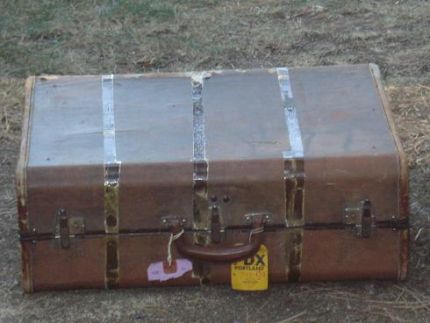
The Atkins family ran a portmanteau making business. Rosina's father was born in 1884 and married Sarah Bell at St Martin in the Fields (the church by Trafalgar Square). Most of Rosina's brothers joined the family business.
www.achome.co.uk/antiques/vintage_luggage.htm lists 1930s luggage makers Edwin Alex Atkins and Frederick Walter Atkins who may well be descendants.
The Cousins Family of Kilsby
In 1863 William Cousins married Hannah Leatherland, a sister of my great x three grandfather. William was a farm labourer born in Kings Sutton, Northants. They settled in Kilsby and had nine children. Sadly Hannah died at the age of 36 leaving William to bring up their large family.
Their eldest son, George moved to Nottingham where the 1901 census shows him living with wife, Mary, and daughter, Eveline, working as a hotel waiter. They were living in Moffatt Street in the St Ann's area of Nottingham.
The 1901 census also shows their daughter, Rosanna, working as a domestic parlour maid in the household of Charles Hatherell, a magistrate in Radford Semele, Warks.
Son, Alfed, was a groom living with his father in 1881. By 1911 he had married and had moved to Colchester, Essex living in the District Garrison as an infantry sergeant.
Charles Joshua Leatherland, my great-grandfather's brother, married Jemima Gibb in Paisley, Scotland in 1920. Jemima Gibb (known as Mima) was the daughter of James Gibb who married Agnes McGuffie Reid in 1876. He was an engine fitter. James and Agnes had three sons and four daughters, all born in Paisley. Two of their daughters, Elizabeth (Lizzie) and Maggie emigrated to Canada when they were young girls.
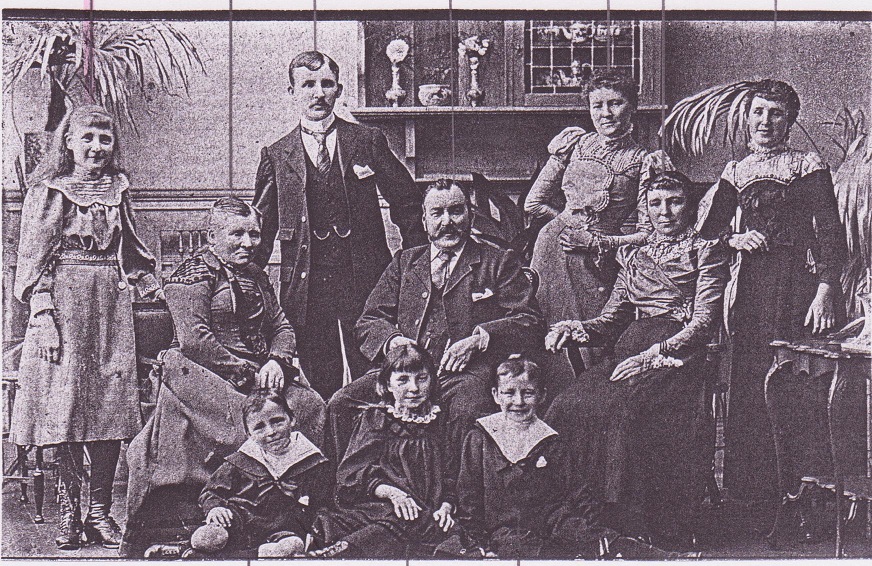
James and Agnes Gibb and their children (Back row from left to right : Maggie, Andrew, Jane, Agnes. Middle row seated : Agnes, James (senior), Elizabeth). Front row children : John, Jemima, James). Photo taken about 1900.
Gail Wheeler who lives in British Columbia, Canada, is a grandaughter of Maggie Gibb. Gail told me that one of her grandmother's sisters, Lizzie, was married and she and her husband came to Canada for his work. He was an engineer and got work in a mine in Cassidy on Vancouver Island. They had two young children and Lizzie needed help with the children. One of her other sisters was supposed to come to Canada to help but she had a boyfriend who would not hear of her leaving Scotland. So it seems that James and Agnes Gibb forced Maggie to go because she had no connections other than her family. Maggie emigrated to Canada in 1912.
Maggie Gibb was 26 years old at the time and unmarried, so Gail wonders whether her great-grandparents thought she would have a better chance of marriage in Canada. She did indeed marry John Lindsay two years later in 1914. John was from Wigtownshire, Scotland.
John Lindsay died in 1968. Maggie died in 1984 at the age of 97. Sadly Maggie never saw her family again after she left Scotland other than her sister, Lizzie, who remained living in British Columbia.
The TREAMER family of Greenwich
My cousin's husband, Terry Treamer, asked me to trace his father's family history.
His father, Bernard Treamer, was born in Greenwich in 1911. Bernard's father, James Treamer, married Margaret Spruhan in Greenwich in 1897. Going back a further generation I found Horatio Noel Treamer, born in 1842 in Greenwich. He married Jane Lynch in Shoreditch in 1864. I managed to get back further to Horatio's father, James Trimmer, born in North Weald, Essex in about 1806 who married Hannah Papworth in about 1830. James Trimmer's origins are less certain but it is believed that his parents were James and Sarah Trimmer (nee Farmer).
The Treamer surname is believed to have Cornish origins (Tremeer). The family birth and marriage certificates and census entries show that James Trimmer was a mariner in Greenwich in 1841. George Papworth was living next door - he was almost certainly his wife Sarah's brother. The 1851 census confirms James' birthplace as North Weald. By 1861 the family moved to Deptford. James was a factory labourer, but son Horatio was working as a shoemaker. Horatio's marriage certificate shows his occupation as cordwainer (a leather shoemaker). His wife Jane Lynch was the daughter of a farmer
The Redgraves of Crick
I mentioned in Leatherland Lives 1650- 1800 that my Leatherland ancestors were distantly related to the ancestors of the Redgrave acting family. The link is a bit obscure via Esther Watts, who married Edward Leatherland in 1726. Esther had a sister, Mary, who married John Redgrave in Crick in 1732. I have a copy of a will made by Esther and Mary's father William Watts who left some of his estate to John Redgrave who was a carpenter.
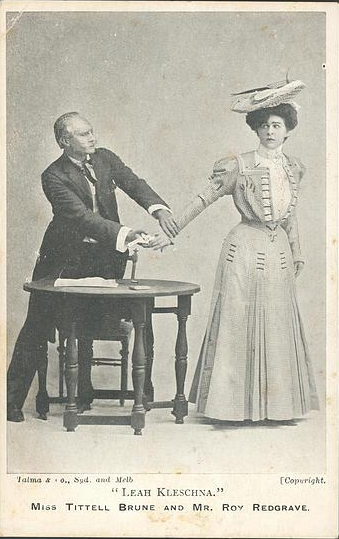
Roy Redgrave, a stage and silent film actor, and father of Sir Michael Redgrave
The ancestors of the Redgrave acting dynasty originated from Crick and I am fairly sure that John Redgrave is one these ancestors. Sir Michael Redgrave's great-grandfather, Cornelius Redgrave, was born in Crick in 1824. The family was based in Crick throughout the eighteenth century but moved to London in the 1850s. Tracing the family back using the excellent resurces on the Redgrave Project website www.redgrave.net/index.php it seems that John Redgrave the carpenter was the great x four grandfather of Sir Michael.
The parish registers for Crick show that the Redgraves were well established in the village. For example the 1777 Militia list for Crick includes two farmers / farmers’ sons Thomas and Valentine Redgrave.
The MAGGOTTS of Clay Coton
Maggott. What a great name ! And quite rare too. I only found seventeen Maggotts in the 1841 census, half of them in Northants and half in Cambridgeshire. My Maggott is John Maggott who married Susannah Leatherland in Clay Coton in 1789. Susannah is a descendant of Christopher Leitherland, one of my seventeenth century ancestors. John Maggot was the Parish Constable in Clay Coton. He was responsible for compiling the parish Militia List in 1777. He was also a butcher according to the parish registers. Susannah was his second wife, his first Isabel died.
The Clay Coton parish registers show that the Maggotts were quite common in the village, for example there were 14 Maggott baptisms in Clay Coton between 1748 and 1810. John and Susannah Maggott had six children to add to the three John had with his first wife.
~~~~~~~~~~~~~~~~~~~~~~~~~~~~~~~~~~~~~~~~~~~~~~~~~~~~~~~~~~~~~~~~~~~~
For detailed family trees please see my tribal pages site : www.tribalpages.com/tribes/david4u